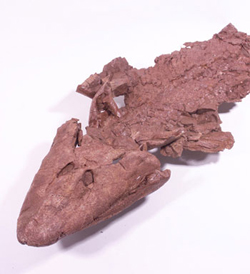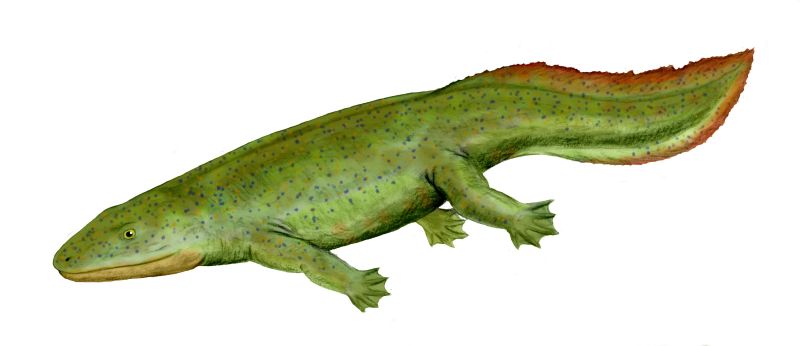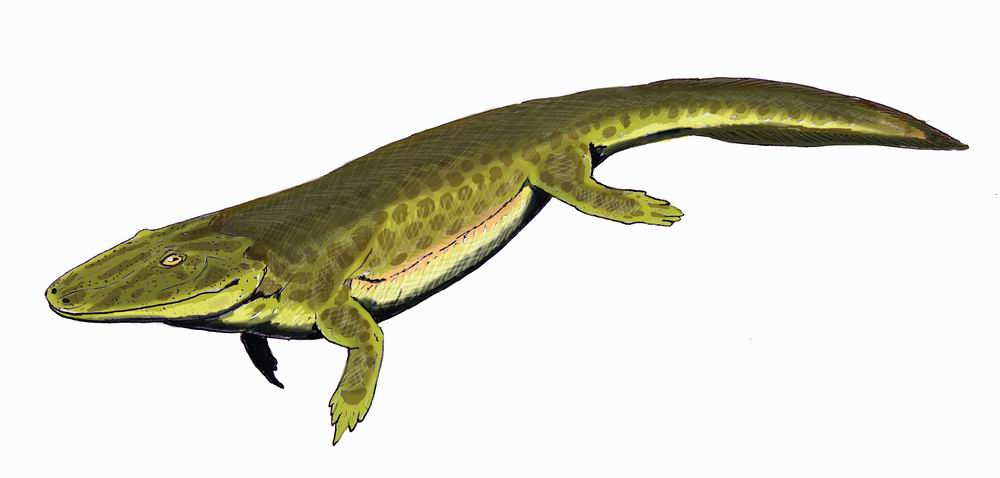The next step of evolution that evolutionists think that they have convincing evidence on is the evolution of birds. We have already seen how the transition would be impossible from a biological point of view, but paleontology supports that conclusion. A few species such as yixianosaurus and pedopenna are put forward as feathered dinosaurs that were the “first steps” in the evolution of birds, and these animals are depicted as very bird-like. However, yixianosaurus is known only from a pair of fossilized arms complete with fossilized feathers, and pedopenna is known only from its hind legs. The animal proposed as the first transitional form is archaeopteryx. Only nine archaeopteryx fossils have been found, which is very odd if the evolution of birds took 80 million years. Furthermore, if the evolution of birds took so long, why has the archaeopteryx been put forward as the only transitional form?
If archaeopteryx did evolve from reptiles, at least, there should be hundreds of transitions with “scale/feathers” and “arm/wings.” Archaeopteryx is noted for its well-developed flight feathers; its feathers are exactly like the feathers of “modern” birds. Also, the archaeopteryx’s bones were hollow, just like those of “modern” birds (Parker et. al, 373). The archaeopteryx did have some atypical characteristics such as a small breastbone, teeth, an elongated tail, and claws on its wings; but there are several birds, alive and extinct, that possess a few of these unique features.
Not only can evolutionists not explain the origin of archaeopteryx, but they are also unable to show through the fossil record how flying reptiles (such as pterosaurs) evolved from their non-winged ancestors.
Finally, if archaeopteryx is the ancestor of all birds, then there should have been no birds living before archaeopteryx. However, this is not the case. Protoavis is a bird that has been discovered in what evolutionists call the “Upper Triassic” level of the geological column. Thus, the evolutionists have dated protoavis as being 75 million years older than the archaeopteryx (
http://www.bsu.edu/web/00cyfisher/), which was discovered in “Jurassic” levels of the geological column. Clearly, if there were birds flying around before archaeopteryx, archaeopteryx could not have been their ancestor.
“The origin of birds is largely a matter of deduction. There is no fossil evidence of the stages through which the remarkable change from reptile to bird was achieved.” – W. E. Swinton
According to evolutionists, the platypus is a leftover from the evolution of mammals from birds. Obviously, the platypus exhibits some very strange characteristics for a mammal – several of which are very birdlike such as a bill, webbed feet, and reproduction through laying eggs. However, the platypus also has pockets in its jaws for carrying food and a spur on its rear legs, which can inject poisonous venom – both of which are traits not found in birds or mammals. Furthermore, the platypus also uses echo location! Obviously, our Creator gave the platypus a mosaic of characteristics best suited for its environment.
The fossil record supports this conclusion – platypus fossils are exactly the same as “modern” platypuses (Huse, 110). In addition, many mammals that are more typical have been found in strata “lower” than the layers that platypuses have been found in.
The “horse series” is another “branch” in the “evolutionary tree” that some evolutionists believe that they have convincing evidence on. Eohippus, first named Hyracotherium because of its similarities to the African hyrax (rock rabbit), is considered by evolutionists to be the first step in the evolution of horses. However, the Hyracotherium/Eohippus has little resemblance of a horse and is very similar to living creatures of the genus Hyrax. Both the hyrax and the Hyracotherium are the size of a small dog and have four toes on the front feet and three on the rear. The creatures have very similar cheek teeth, which are more like the teeth of rhinoceri than those of horses (
www.bible.ca).
Eohippus (“dawn horse”), Orohippus, and Pliohippus are supposedly some of the forerunners of the modern horse. However, Eohippus had 18 pairs of ribs; Orohippus (Eohippus’s descendent) had only 15 pairs of ribs; Pliohippus had 19 pairs; and the modern horse is back to 18 pairs. The number of lumbar vertebrae also changes from six to eight and then back to six again (
www.bible.ca). This fluctuating number of bones highly suggests that the “horse series” is a group of unrelated animals with a similar overall body plan. When evolutionists present the horse series in biology textbooks, they emphasize the decrease in the number of toes in the animals and the increase in the size of the animals. However, they fail to mention the fact that Neohipparion, which had three toes, lived contemporaneously with Pliohippus, which had one toe! They also fail to tell students that, according to the theory of evolution, North American ungulates evolved their rear foot from three toes to a single hoof at the same time that South American ungulates were evolving their rear foot from one hoof to three toes! Furthermore, the system of arranging the creatures in order of increasing size is faulty. “Modern” horses can range anywhere in size from the 17” Fallabella (about the size of the Hyracotherium) to the 80” Clydesdale.
Even though there are thirty-two species in the horse series, the lack of transitional forms still presents problems. There are no fossils showing the transition between Eohippus its presumed ancestor the Condylarth (Kofahl, 27). Also, there are no transitions between each of the “horses.” Each animal appears in the fossil record without showing how certain characteristics of the horse were developed, such as teeth. In each of the animals there are either grazing teeth or browsing teeth, but no transitions (Moore, 403).
“This [gap] is true of all the thirty-two orders of mammals . . . The earliest and most primitive known members of every order already have the basic ordinal characters, and in no case is an approximately continuous sequence from one order to another known. In most cases the break is so sharp and the gap so large that the origin of the order is speculative and much disputed.” – George Gaylord Simpson
The most damaging evidence against the “horse series” is the fact that “modern” horses have been found in the same or older layers of the geological column that Eohippus fossils have been found in! Equus nevadenis and equus occidentalis, two “modern” horse species, have been found in the same rock formation as an Eohippus fossil (Wysong, 300-301). In addition, the animals that the “horse series” is made up of have been taken from around the world to make the series. The series starts in North America and hops around to Europe, India, and South America!
“The uniform, continuous transformation of Hyracotherium into Equus, so dear to the hearts of generations of textbook writers never happened in nature.” – George Gaylord Simpson
“But the facts of paleontology conform especially well with other interpretations. . . e.g., divine creation. . .” – D. Dwight Davis, vertebrate morphologist
“[The horse series] has been presented as literal truth in textbook after textbook. Now I think that that is lamentable, particularly because the people who propose these kinds of stories themselves may be aware of the speculative nature of some of the stuff.” – Niles Eldredge, American Museum of Natural History
“In spite of these examples, it remains true, as every paleontologist knows, that most new species, genera and families, and that nearly all categories above the level of families, appear in the record suddenly and are not led up to by known, gradual, completely continuous transitional sequences.” – George Gaylord Simpson
“The origin of the rodents is obscure. . . . Presumably, of course, they had arisen from some basal, insectivorous, placental stock, but no transitional forms are known.” – Alfred Romer, paleontologist
“If the evolutionary origin of the higher animals is obscure, the origin of insects is completely blank. Insects occur in fantastic number and variety, but there is no fossil clue to their development from some kind of evolutionary ancestor.” – Dr. Henry Morris







